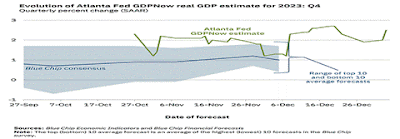The US economy grew either 2.5 percent or 3.1 percent annually in 2023, whichever GDP growth indicator you choose.
Why such strong growth when the rest of the world is still recovering from the COVID pandemic? Even China is struggling from its mishandling of COVID-19, after literally locking people in their buildings for weeks to prevent its spread.
The US recovered more quickly because of the various, bipartisan aid packages that quickly created vaccines and dumped some $5 trillion in cash into consumer and business pockets—such as the PPI and PPE payments to cover losses incurred by the pandemic.
This is portrayed in the US Treasury graph of developed countries’ jobless rates. Only Japan and Germany have unemployment rates below our 3.7 percent, which has held now for two years.
That means ‘Helicopter’ Ben Bernanke, Fed Chair Alan Greenspan successor during the Great Recession, was right. He was nicknamed such because he was first to advocate the various Quantitative Easing packages that showered (oops, I mean injected) enormous amounts of cash into the US economy that brought US out of the Great Recession of 2007-2009, so named because it caused almost as much damage as the Great Depression.
The Biden administration is doing the same with joint government-private investments in infrastructure and the mitigation of climate change that are injecting $ trillions more into the economy in productive ways that will pay for themselves and more.
Now a first look at 2024 is the Atlanta Fed’s GDPNow estimate of first quarter growth. It sees a continuing recovery.
“The initial GDPNow model estimate for real GDP growth (seasonally adjusted annual rate) in the first quarter of 2024 is 3.0 percent on January 26. The initial estimate of fourth-quarter real GDP growth released by the US Bureau of Economic Analysis on January 25 was 3.3 percent, 0.9 percentage points above the final GDPNow model nowcast released on January 19.”
The Atlanta Fed’s estimate of future GDP growth has been surprisingly accurate, in other words, and more positive than that of most Blue Chip economists surveyed as shown in the Atlanta Fed graph.
Further evidence of a surging economy is rising consumer confidence. The Conference Board’s Consumer Confidence Index® rose in January to 114.8 (1985=100), up from a revised 108.0 in December. It was the highest since December 2021, and marked the third straight monthly increase.
“January’s increase in consumer confidence likely reflected slower inflation, anticipation of lower interest rates ahead, and generally favorable employment conditions as companies continue to hoard labor,” said Dana Peterson, Chief Economist at The Conference Board. “The gain was seen across all age groups, but largest for consumers 55 and over.”
And lastly, Pending Home Sales Index (PHSI)* – a forward-looking indicator of home sales based on contract signings – increased to 77.3 in December. Year over year, pending transactions were up 1.3%. An index of 100 is equal to the level of contract activity in 2001.
"The housing market is off to a good start this year, as consumers benefit from falling mortgage rates and stable home prices," said Lawrence Yun, NAR chief economist. "Job additions and income growth will further help with housing affordability, but increased supply will be essential to satisfying all potential demand."
Lower interest rates will be the key to further recovery. Consumers are saying they are happier and a strong employment report on Friday should confirm 2024 may be an even better year.
Harlan Green © 2024
Follow Harlan Green on Twitter: https://twitter.com/HarlanGreen


















